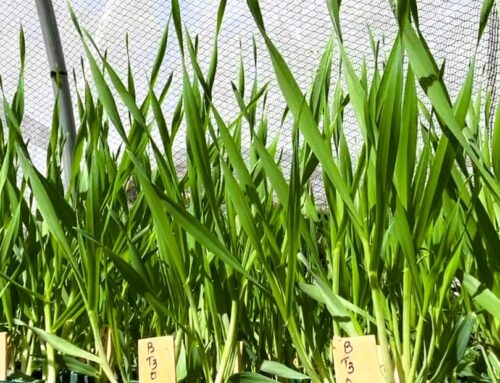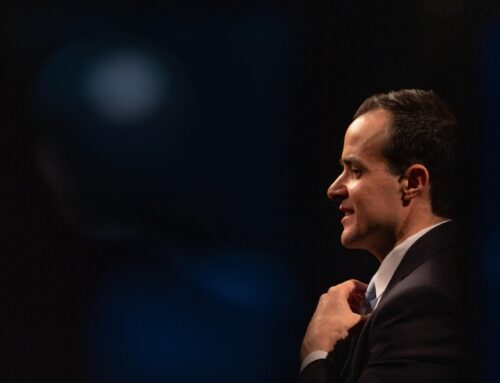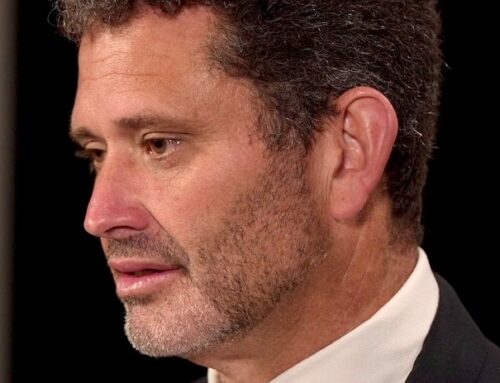In short:
Energy experts fear the growing number of power-hungry data centres could make electricity more expensive.
Data centres could consume as much as 8 per cent of the grid’s demand by 2030.
What’s next?
Data centre operators are turning to renewable sources to power new centres.
Inside a vault of this data centre is what looks like a hotel for computers.
It’s noisy and hot. Each of these blinking server racks belongs to a business or an organisation.
They house their critical infrastructure and data here because it’s highly secure – with layers of security including ID checks and fingerprints just to get in.
“Whether that’s networking or just general computer infrastructure,” David Dzienciol, chief customer and commercial officer of NEXTDC, told The Business inside a data hall.
“We run 14 data centres across the country, servicing customers from the largest multinationals, through to Australia’s largest companies all the way through to small business.
“We rely on technology for everything, whether it’s our health care, banking services or government services.
“There’s no industry that isn’t reliant on data today.”
Soaring demand
Australia is one of the top five data centre hubs in the world.
There are 214 data centres spread across the country, according to the Australian Information Industry Association.
With the explosion of cloud computing and artificial intelligence, the industry is expected to grow exponentially.
“We believe that we are at the beginning of a massive shift with AI,” Mr Dzienciol said.
“We truly believe that we’re at the beginning of a change in accelerated computing that could see demand skyrocket over the next decade.”
Power hungry beasts
Data centres are already big power users in Australia.
They need significant amounts of electricity to run high-intensity computing and cooling systems.
Just one large data centre can consume the same amount of energy required to power 50,000 homes.
Morgan Stanley estimates that data centres are currently using 5 per cent (1,050 MW) of the electricity on Australia’s power grid and that is expected to grow to 8 per cent (2,500 MW) by 2030.
Some estimates even suggest they could require up to 15 per cent of the power on the grid by then.
Straining grid
As the nation races to electrify, with households dumping gas appliances and more people driving electric vehicles, the grid is already under pressure from rising demand.
The Australian Energy Market Operator’s latest Integrated Systems Plan anticipates overall electricity consumption from the grid to nearly double by 2050.
The director of the Victoria Energy Policy Centre, Bruce Mountain, said Australia was not well placed to cope with that increasing demand.
“We are now hitting the difficult stages of the energy transition,” Professor Mountain told The Business.
“We’ve got wind and sun and land, but we don’t have other clean energy, biomass or decent amounts of hydro or nuclear.
“And that’s a disadvantage that we face that other countries don’t face.”
Professor Mountain thinks although the data centre sector is a vital service to Australia’s economy, the boom will make the energy transition more challenging.
“They make the transition challenge harder, because not just that you need to replace coal-fired generation, you need to build new capacity to meet rising demand,” he said.
“It’s not yet an insurmountable problem, but if the demand continues to escalate at the rate it has, based on the recent developments, I think it is an issue.”
More price pressure
The director of the Energy Program at Grattan Institute, Tony Wood, agreed that the sector presents a unique challenge to the grid.
“That means putting pressure on our electricity grid. It means even putting pressure on our greenhouse gas emissions,” he said.
“If you add a lot more demand, and you don’t add more supply, then prices go up.
“I think governments can get on top of this, but now is the time to be doing it.”
Energy Minister Chris Bowen said the first auction of the Capacity Investment Scheme, which will support 6GW of new power, has received more than 40GW of project registrations, showing there is a strong pipeline of renewables ready to go.
Energy retailer and generator Origin supplies power to about a third of all data centres in Australia.
The man in charge of these accounts said the company was looking at a range of options to meet their needs.
“Typically, we will look at solutions like distributed generation, so wind or solar at site, storage solutions and backup generation, and using energy from the grid as well,” James Magill, head of Origin Zero, told The Business.
“Our customers, with their forecasts, would vary somewhat, but typically, those growth forecasts could be between about 10 and 30 per cent per year.”
Mr Magill said to meet those energy demands, companies could be strategic about where they build data centres.
“Some of the locations could be more regional, and that can match some of the new renewable generation.”
Posted , updated





